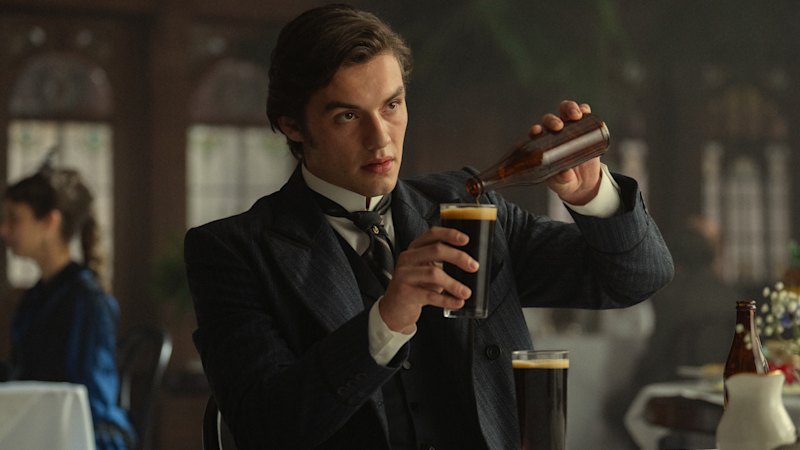
The new Netflix drama, House of Guinness, created by Steven Knight, follows the tumultuous aftermath of brewer Sir Benjamin Lee Guinness‘s death in May 1868. It portrays the struggles of his eldest son, Sir Arthur Guinness, as he seeks to become a Conservative MP for Dublin City by 1870. While the series features several real-life characters, it also introduces fictional elements for dramatic effect.
The show revolves around the Guinness family’s efforts to maintain their brewery’s dominance in Ireland and their ambitions to penetrate the American market. Despite the historical backdrop, viewers should not expect strict adherence to factual accuracy. Many events are embellished or altered for entertainment value.
Funeral Disparities and Inheritance Drama
The series depicts Sir Benjamin’s funeral on May 27, 1868, as a chaotic event marked by public disorder, driven by his support for British rule in Ireland and his family’s Protestant faith. In reality, reports from the Times on May 29, 1868, described the service as “one of the most impressive demonstrations of public feeling ever seen in this city.” The mourners were noted for their respectable appearance and orderly conduct, indicating that any protests were minimal.
Another key moment occurs during the reading of Sir Benjamin’s will, revealing he left his fortune primarily to his eldest son, Arthur, and his youngest son, Edward. The series suggests this decision stems from Arthur’s management of the brewery, which is partly accurate. The will stipulated that both sons should carry on the brewery’s operations. However, the portrayal of their brother Benjamin as a penniless drunkard forced into military service is fictional. In reality, he inherited £20,000 with the expectation of establishing himself.
Exploring Relationships and Historical Context
Sir Arthur’s marriage to Lady Olivia Hedges-White is also a focal point of the series. Lady Olivia, believed to be among the wealthiest women in the then United Kingdom, does not bear children in the show. The narrative implies that Arthur was gay and that Lady Olivia accepted a marriage of convenience. While sexual freedom existed among the elite during this period, there is no evidence supporting claims of Arthur’s homosexuality, especially given the severe legal repercussions for such behavior in 19th-century Ireland.
The character of Edward, depicted as the innovative force behind the Guinness brand, is historically accurate. However, the series inaccurately attributes the creation of the harp symbol to him. The harp, an Irish heraldic symbol, was already associated with Guinness long before Edward’s significant contributions began.
The storyline involving the family supporting social housing initiatives in Dublin is based on truth but misrepresents the timeline. Edward’s idea for the Guinness Trust for the Housing of the Poor emerged in 1890, well after the events depicted in the show. Most funds were allocated to projects in London rather than Ireland.
The show also introduces a fictional character, Byron Hedges, who drives the importation of Guinness into New York. Historically, Guinness was first shipped to the United States in 1817, years before the timeline suggested in the series. The Guinness brand would not establish a brewery in the U.S. until 1948, which later closed in 1954.
The series culminates in a suspenseful scene where Arthur faces an assassination attempt by a member of the Irish Republican Brotherhood. While the dramatic moment leaves viewers in suspense, historical records confirm that Arthur lived until 1915 without any such threats to his life.
As House of Guinness continues to stream on Netflix, it offers a mix of historical fact and creative storytelling, engaging viewers while sparking interest in the rich history of the Guinness family and their iconic brand.







